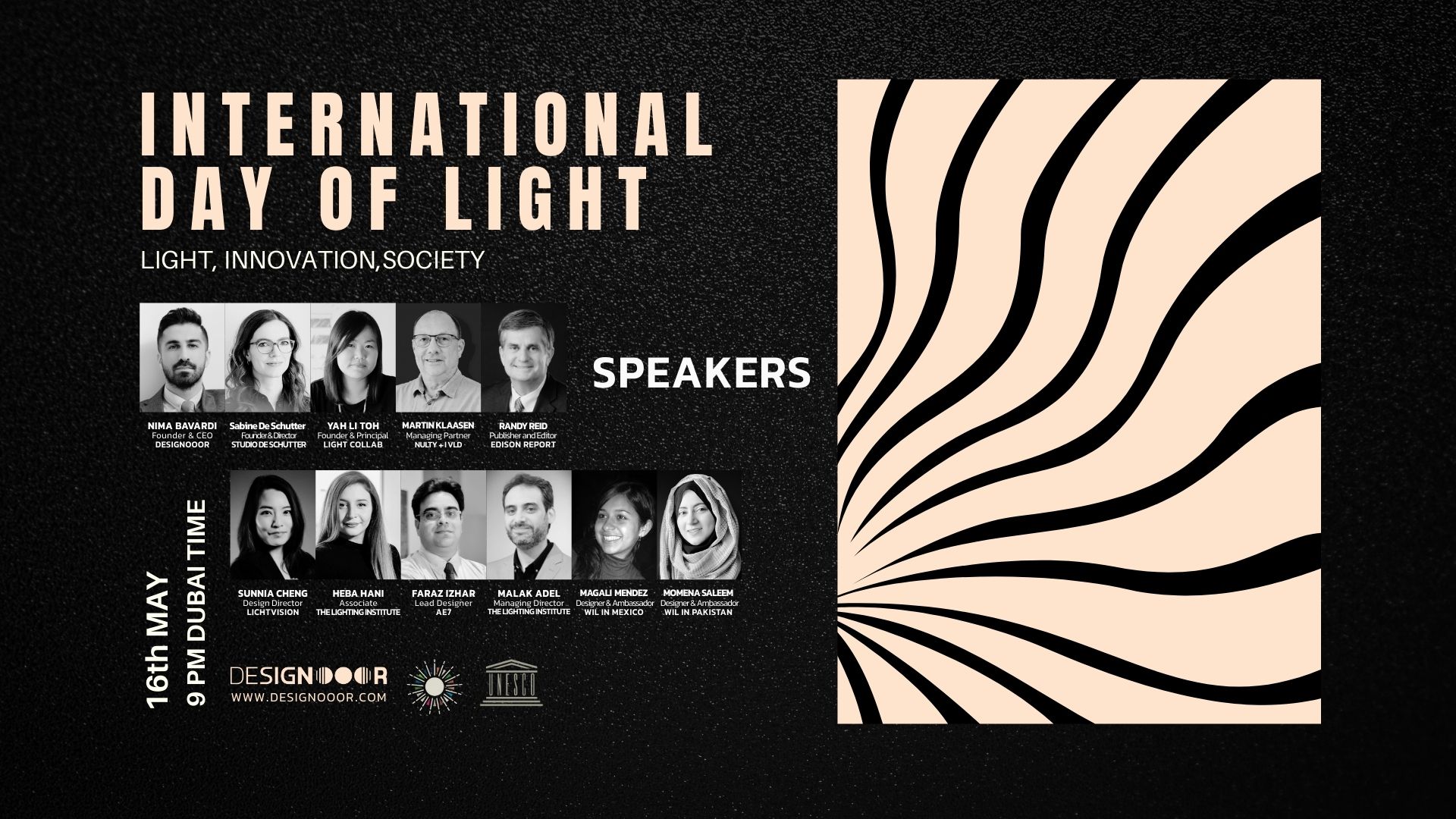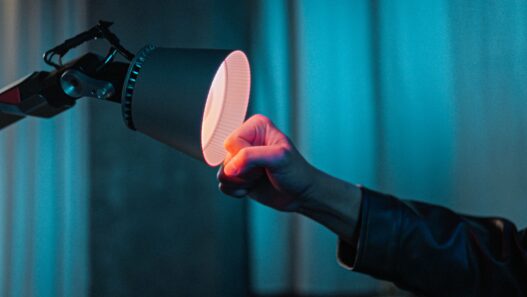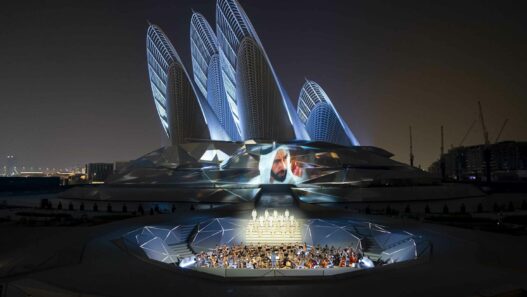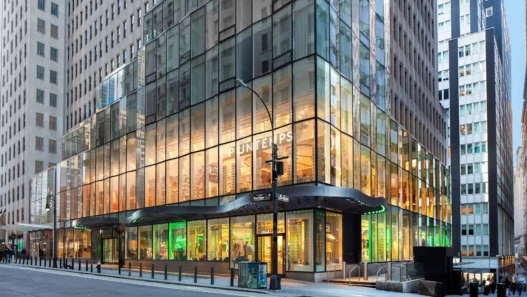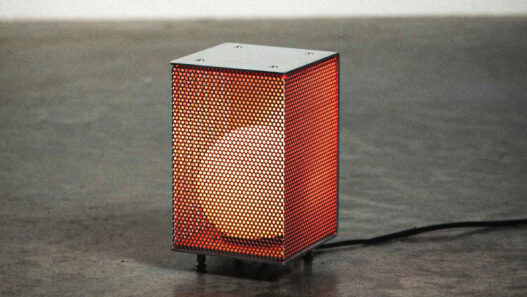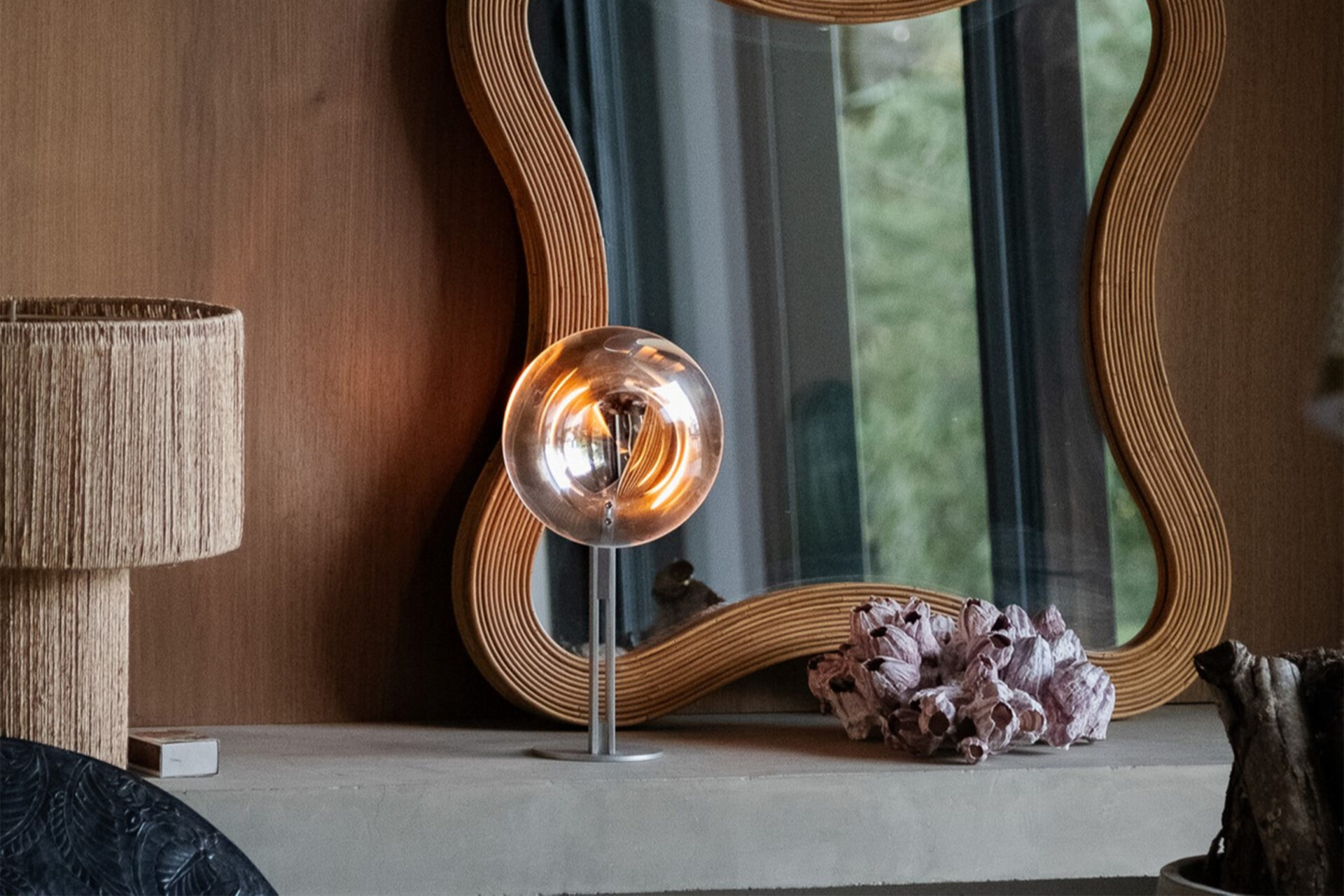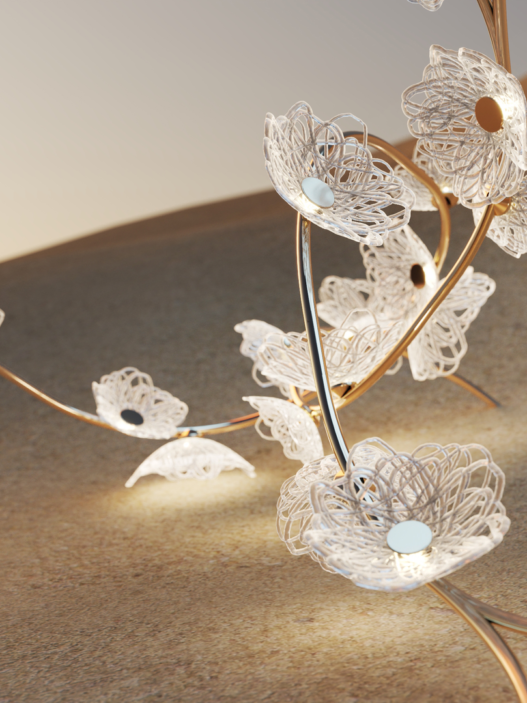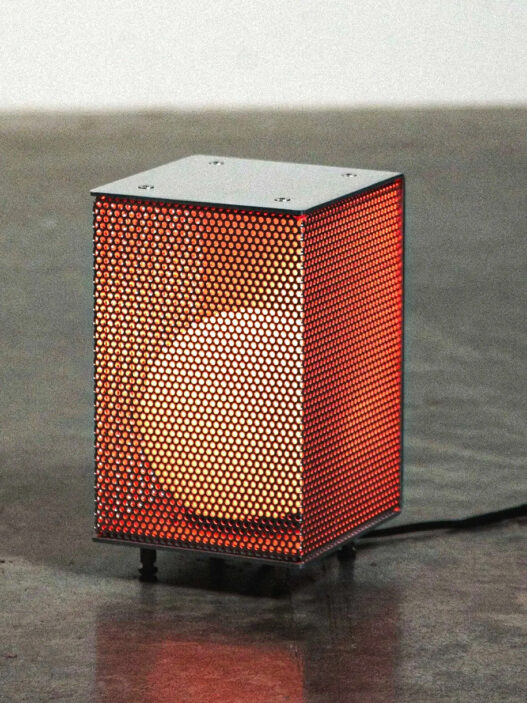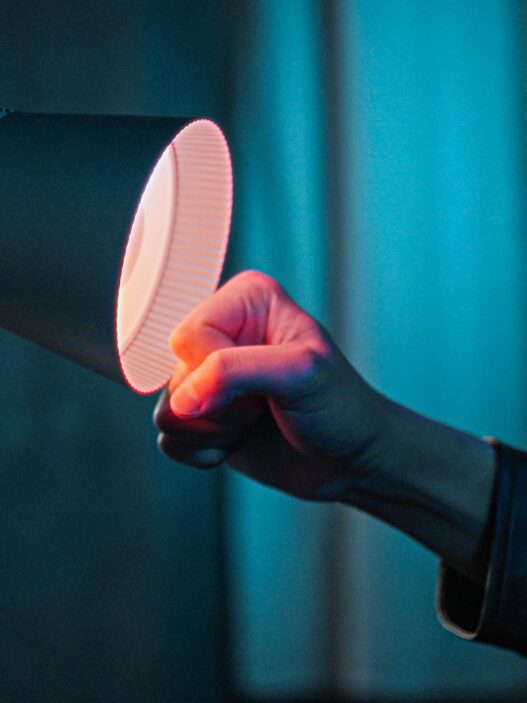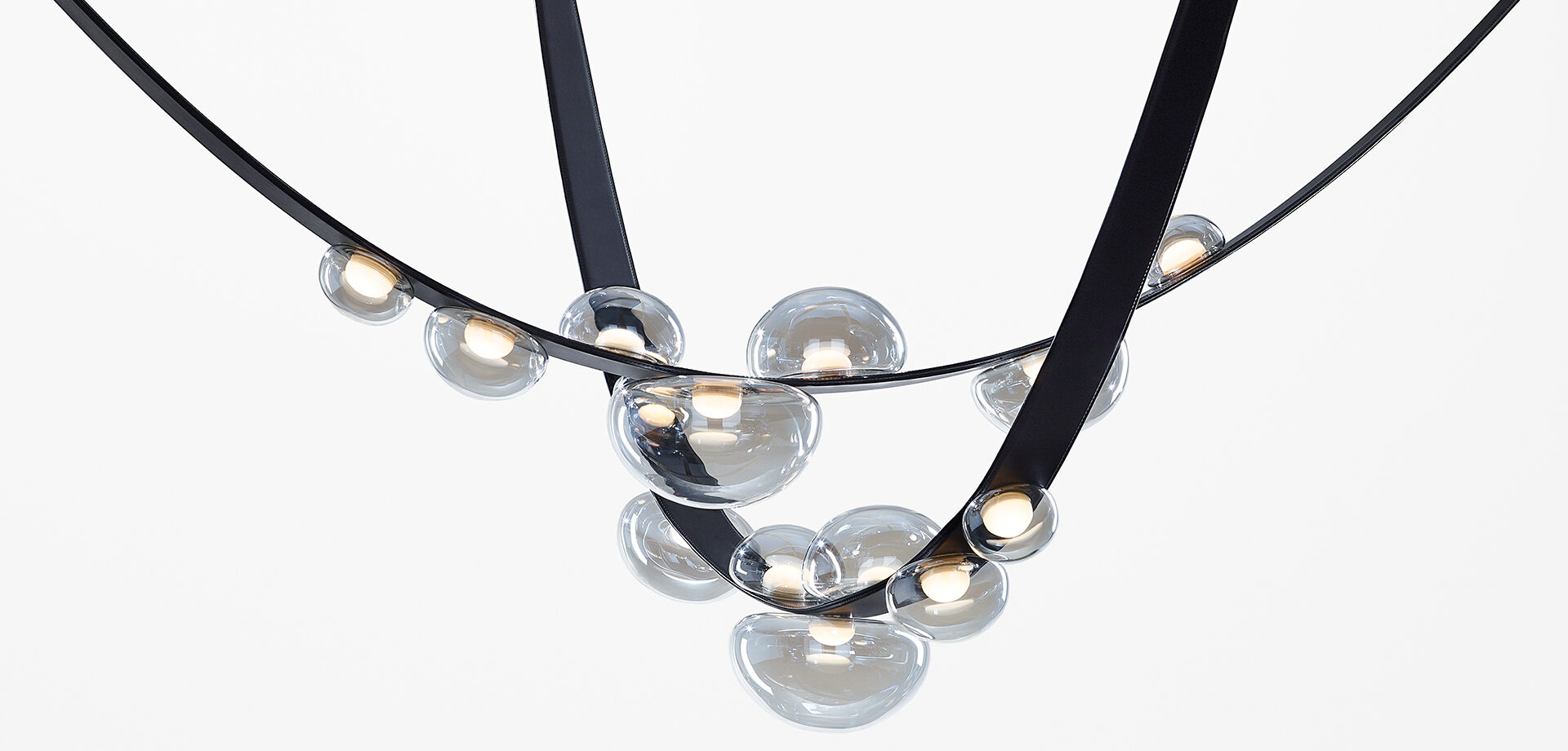Fire held in shifting glass
There is a particular audacity in treating a flame not as illumination, but as subject. Flare seems born from an instinct to witness light rather than distribute it, to hold attention at the fragile point where fire becomes signal. One sees a small candle held upright by a rigid, almost ascetic structure of metal, and opposite it, a lens swollen like a glass tide, catching each tremor of heat and stretching it into something more declarative. The design leans toward observation over ambience, turning a domestic glow into a phenomenon to be studied. It refuses the comfort of a lamp that behaves predictably. Instead it offers a stage where light is forced into expression, amplified, distorted, made momentary and sometimes unruly.
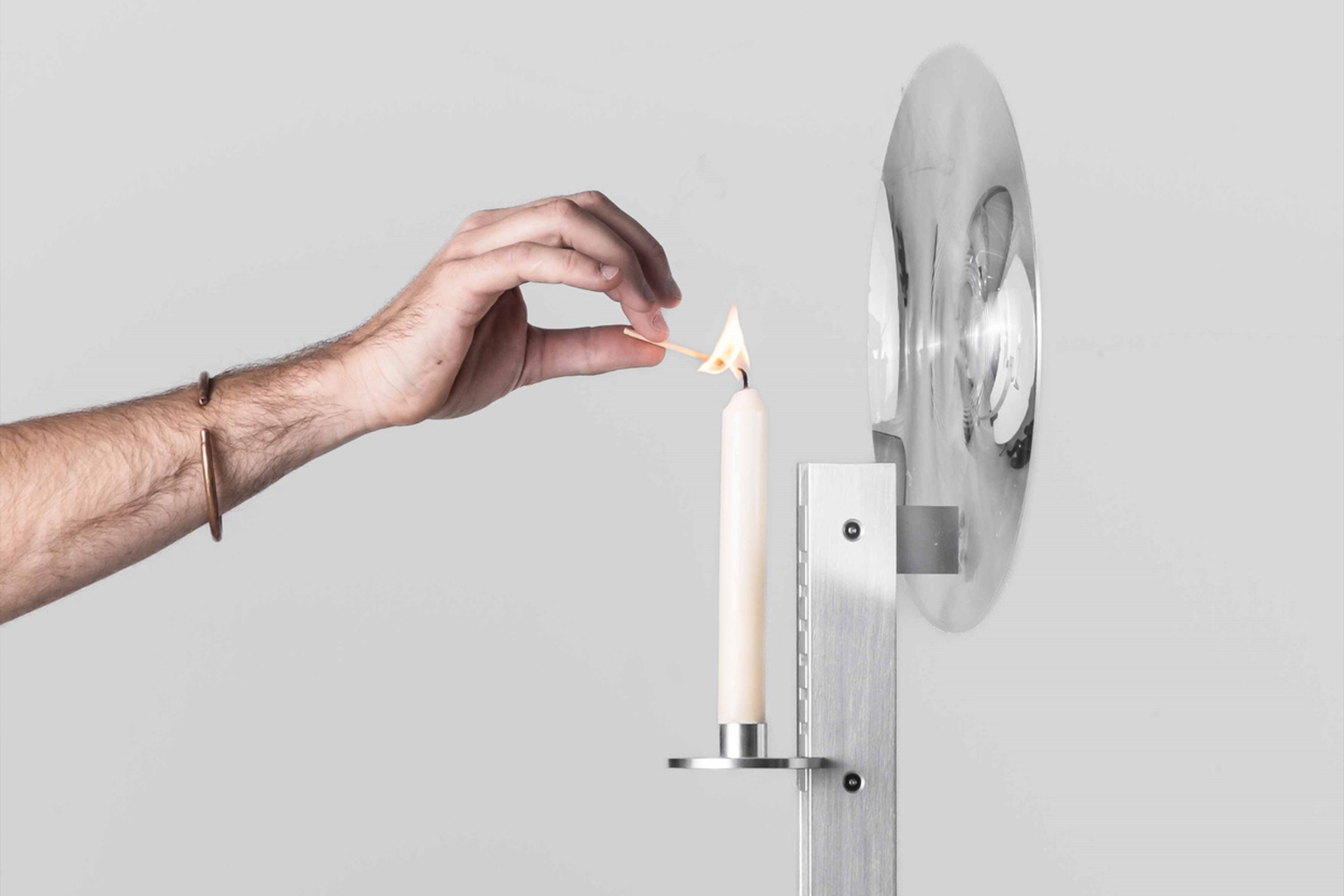
The designers describe their starting point as an encounter with Fresnel lenses at high altitude, where vision sharpens under cold air and the act of seeing becomes almost athletic. From that moment, the intention feels clear. This product wants to show light in the process of becoming. The candle is only half the story; the true event occurs in the air between wax and glass, where reflection and refraction meet as equals. The object is still, but perception moves. One could stand before it and watch for an hour, the same way one studies fire in a mountain shelter, waiting for meaning to surface from repetition. This is not a lamp for those who expect utility to dominate experience. It is a lens trained on the ancient impulse to gather around flame, though here the gathering happens through the eye instead of the body.

When placed on a shelf or table, Flare becomes part of a more domestic landscape. The wood-framed mirror behind it curves in quiet waves, and the lamp’s glass sphere absorbs the room like a memory half-recalled. The candle’s warmth travels outward in reflections, soft and amber, brushing the objects around it without fully illuminating them. Instead of flooding space, the light pools, folds, concentrates. A viewer notices shadows behaving strangely, sharper in some angles, dissolving into haze in others. Light has character now, almost temperament. A small shift of air sends ripples through the beam, and the lens repeats them faithfully, as if documenting the candle’s private breath. The product invites stillness from its user, because to rush past it is to miss its purpose. It rewards the slow gaze.
The engineering here is unobtrusive, though demanding. A Fresnel lens is not gentle; it exaggerates flaws, magnifies instability. Choosing fire as the source introduces volatility, and the designers seem comfortable allowing chance to participate. That decision reveals respect for the unpredictable. The object does not attempt to tame flame. It grants it agency, frames it, listens to it. The structure, a simple vertical body, brushed metal, unembellished joints, feels like architecture reducing itself to bare necessity. Nothing distracts from the optical drama. It stands almost monastic, leaving all theatrics to the lens and the flame. A less confident design might have sought decoration. This one trusts the physics of light to perform without costume.

Yet the product carries a tension. As an exploratory tool, it succeeds in awakening one’s attention to light’s movement, its fragility, its stubborn brilliance. As functional lighting, it remains limited, for amplification does not equal illumination in a conventional sense. The beam it casts is narrow, more gesture than coverage, a signal adrift in space. In a home, such a piece becomes punctuation rather than narrative. It marks a moment, a dinner’s final hour, a quiet evening when conversation slows. It asks for presence when used, demanding that someone tend the flame, replace it when it burns low, acknowledge its temporality. These demands are not flaws so much as conditions of engagement, though they may challenge anyone seeking ease. Fire is never a default choice for everyday lighting, and this product does not pretend otherwise.
Still, there is achievement here that deserves attention. By rerouting focus from output to process, Flare gives light a renewed sense of materiality. Most modern lighting design prioritizes efficiency and controllability, often at the cost of wonder. Here, wonder is the medium. The candle becomes a moving core, and the lens becomes a storyteller translating flicker into spectacle. The viewer becomes witness to light’s smallest decisions, how it leans, how it retreats, how it hesitates before extending itself into space. In this sense the collection revives a kind of early scientific curiosity, the same impulse that guided astronomers pressing their eyes to glass, hoping the world might reveal itself one photon at a time.

The designers describe observing camera operators at altitude and recognizing in them a kinship with astronomers. That connection carries into the object. There is the same reverence for precision, the same patience for subtle transformation. The lamp stands as both tool and question: how does light behave when given room to articulate itself? The answer shifts continuously, for each flame burns differently, and each surrounding environment alters the lens’s voice. Wind is not simply disturbance, it becomes co-author. The surroundings become palette. Even the user shapes the outcome by choosing candle thickness, curl of wick, distance between lens and wall. The piece asks participation, not consumption.
In the room, the lamp finds a curious position between ornament and instrument. Its presence is quiet while unlit, almost reserved, with its single upright stem and orderly components. The glass, at rest, reflects the world without urgency. Once the flame is alive, the entire object seems to inhale. The lens brightens like an eye catching sudden thought. Reflection becomes movement, not static image. Light begins to write itself across surfaces, and the room acquires new texture, grain in wood deepens, edges sharpen then blur, shadows curve as though stretching toward some unseen tide. The lamp does not impose atmosphere; it reveals it. It reminds the observer that illumination is not only what a fixture delivers, but what a space chooses to show.

The object’s honesty lies in its refusal to hide the mechanism. There is no diffuser, no shade, no attempt to soften the raw encounter between flame and lens. This directness can feel almost severe, yet within that severity exists generosity. Nothing about the light is fixed. Every moment offers a new sketch of brightness. The unpredictability forces attention into the present, suspending the mind in the simple act of watching. Such experience is rare in product design, where clarity often matters more than vulnerability. Flare leans toward vulnerability as value. If the flame sputters, the lens shares its weakness. If wax melts unevenly and the flame lists sideways, the beam bends in sympathy. Flare is transparent about cause and effect.
One might think of this piece not as a lamp, but as an argument for light’s autonomy. The designers appear less interested in controlling illumination and more in framing its behavior so that its smallest gestures become legible. This approach turns the product into documentation, a record of ephemeral energy made momentarily visible. The user becomes archivist, the room becomes observatory. Even the still image of Flare, viewed without movement, hints at expansion. The glass holds within it a memory of fire, a promise of restless brightness. It transforms a shelf from storage into stage, a candle from necessity into performance.
The story behind the object grounds it. A lens carried to high altitude, exposed to shifting stars and wind, used first for capturing spectacle rather than generating it. That origin remains detectable in the final product, as though a fragment of mountain air still lives behind the glass. The lamp feels portable, yet not casual. It wants placement with intention, near a wall where projection can stretch, near a reflective surface where light can echo. Its best moments happen in solitude, when surrounding noise dissipates and small motions become visible. This is lighting that favors intimacy. It asks for quiet.
In the end, Flare does not reinvent illumination so much as it reawakens perception. It reminds us that light can tremble, hesitate, surge. It insists that flame retains relevance not only for its warmth, but for its expressive unpredictability. From a design standpoint, the work stands on clarity of purpose. The form yields to function with restraint, and the function yields to experience with respect. Where many products chase utility, this one pursues meaning. It succeeds in offering a space where light is truly seen, not assumed. It gives us back the pleasure of paying attention.
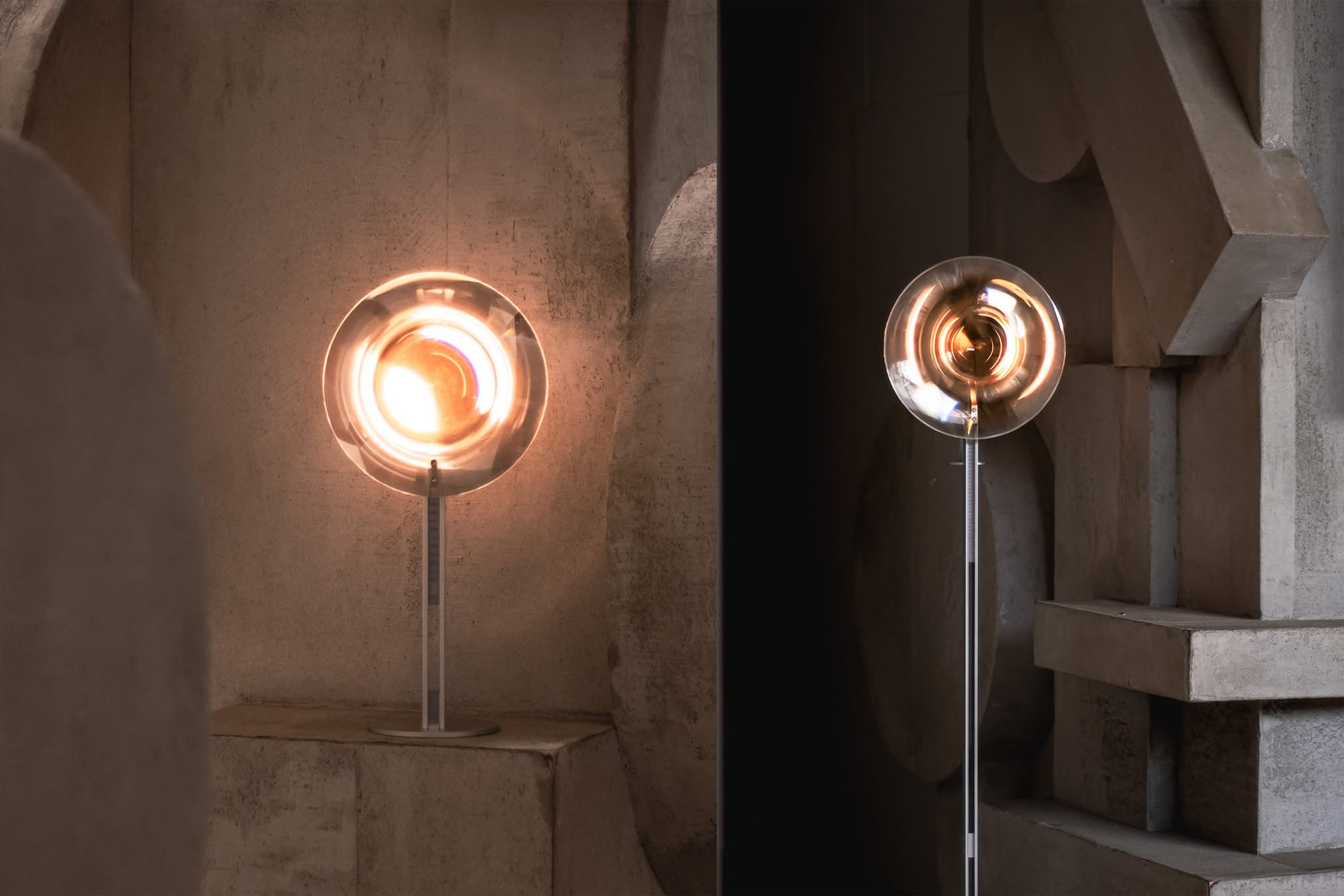
A flame usually burns unnoticed in the corner of a room, resigned to its role. Flare lifts that flame onto a pedestal and asks it to speak. Watching it, one becomes aware of how rare it is to witness light in conversation with itself. If the object leaves anything with the viewer, it is the memory of brightness as a living presence, transient, articulate, quietly defiant.
